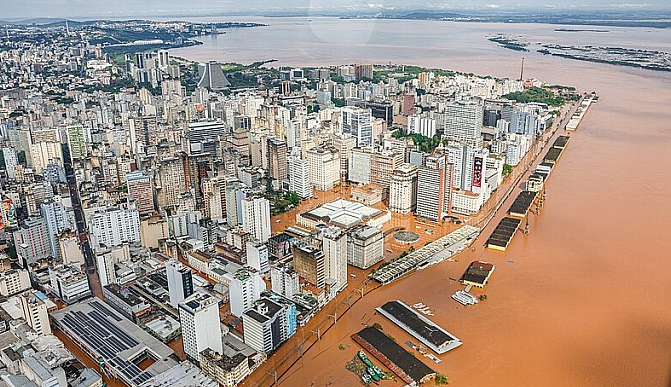Experts stress that investing in smart drainage systems, reservoirs and green infrastructure can protect communities from extreme events
The recent tragic floods in the Brazilian state of Rio Grande do Sul highlight the need to take effective measures to rehabilitate affected areas and prevent future natural disasters. Flooding causes significant damage to communities, infrastructure and the environment, highlighting the importance of effective stormwater management through expertise.
The application of coordination technologies is essential not only for the recovery of affected areas, but also for building resilient infrastructure.
Investing in smart drainage systems, reservoirs, and green infrastructure can save lives and protect communities. These innovative applications are critical to avoiding new disasters and reducing the impact of rain and flooding.
Here are some techniques and measures that can help with disaster recovery and prevent future disasters:
Smart drainage systems: These systems use sensors and the Internet of Things (IoT) to monitor and control water flow in real time. They can measure water levels, detect blockages and automatically activate pumps and gates, ensuring efficient drainage and preventing localized flooding.
Products are shown in the picture below
Reservoirs: These reservoirs, underground or open, store large amounts of water during heavy rains and release it slowly to avoid overloading the drainage system. This technology helps to control water flow and reduce the risk of flooding.
Rainwater retention infrastructure: Solutions such as green roofs, gardens, plazas, landscaped parks and flowerbeds of plants and trees, permeable walkways, hollow element floors with grass in the middle, and permeable areas can absorb and retain rainwater before it reaches the urban drainage system, reducing the volume of surface water and the load on existing infrastructure.
Solid separation system: A device placed at the outlet of a stormwater pipe before it enters the public drainage network, whose purpose is to separate and retain coarse solids and prevent them from entering the pipe in order to avoid pipe clogging. Networks and siltation of receiving water bodies (rivers, lakes and DAMS). Coarse solids, if not retained, can create a barrier in the urban drainage network, preventing the flow of water and potentially causing flooding that blocks upstream. A silted body of water has a low drainage depth, which can lead to an increase in the water level that needs to be drained, potentially overrunning the banks and causing flooding.
Hydrological modelling and rainfall forecasting: Using advanced hydrological models and meteorological forecasting, heavy rainfall events can be predicted and preventive measures, such as activating pumping systems or empting reservoirs, can be taken to mitigate the impact of flooding.
Monitoring and warning: A continuous monitoring system of water levels in rivers, canals and drains is combined with an early warning system to warn people and authorities of impending flood risk, enabling a rapid and effective response.
Stormwater recirculation systems: Infrastructure that collects, treats and uses stormwater for non-potable purposes, thereby reducing the amount of water that needs to be managed by drainage systems and relieving stress during heavy precipitation events.
“This requires a coordinated effort between government, business and society, emphasizing the need for effective public policies and sustained investment in infrastructure and education.” Taking these steps can transform urban water management and ensure that cities are prepared for extreme weather events.”
Post time: Jul-25-2024



